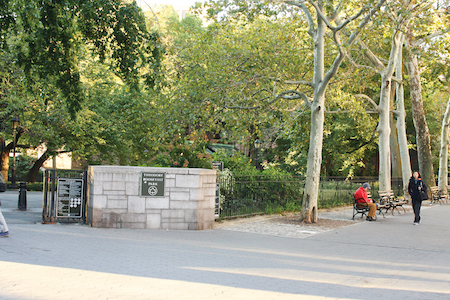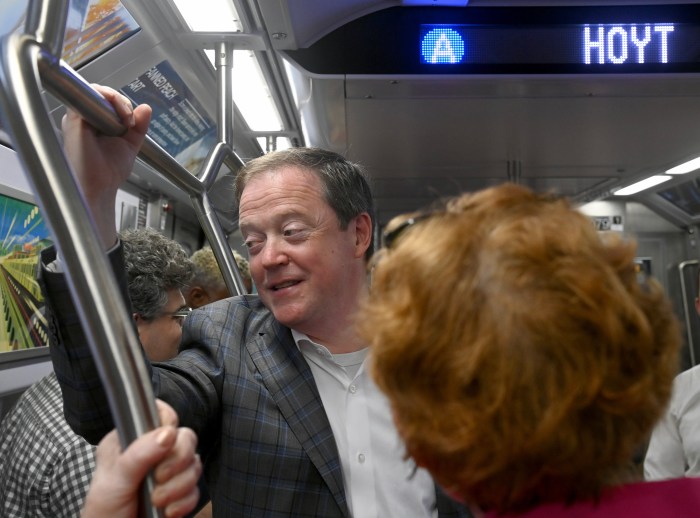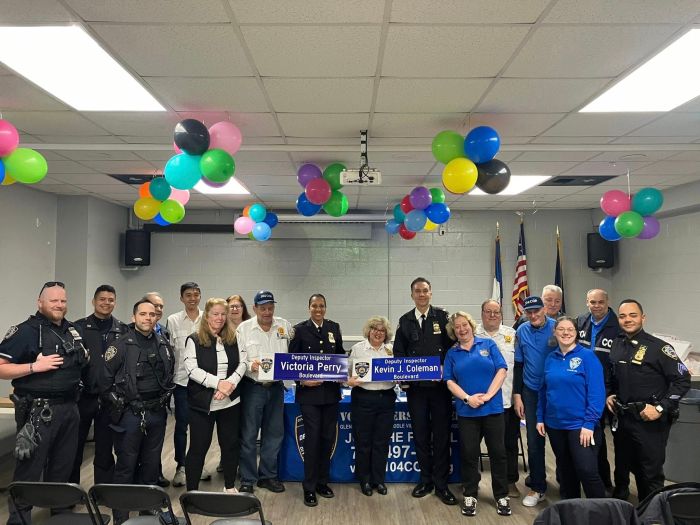
BY SIG GISSLER | As the word spreads, more and more Upper West Side residents are alarmed by the American Museum of Natural History’s proposed massive expansion into beloved, tree-filled Theodore Roosevelt Park.
And rightly so.
Our organization, the Defenders of Teddy Roosevelt Park, was formed this past July by a handful of neighbors. Our growing list of supporters exceeds 2,500. Like other citizens, we don’t know yet the exact footprint or design of the science center that the AMNH wants to build near the park’s 79th Street entrance, just off Columbus Avenue. The museum says a “conceptual design” is coming this fall.
However, based on what the museum has disclosed, the project is clearly immense, rising to about six stories and totaling 218,000 square feet, carved mainly from parkland. Indeed, it is comparable in square footage to the new Whitney Museum downtown. How much more do you need to know before getting very worried?
Express Yourselves
The imperiled area contains about 10 trees probably 50-75 years old, all at risk. Equally important, this part of the park is one of the sweetest gathering spots in the city. It is flat, safe, and intimate. Its users are diverse. It is where dads teach their kids to ride a bike, moms take a newborn for a stroller ride, three-year-olds perfect their scooter skills, the disabled and the elderly find a shady bench, neighborhood workers eat their lunch, and, yes, museum patrons plunk down to rest after their visit. As a day unfolds, you can witness the park’s gentle sequence of uses.
We’ve spent a lot of time talking to neighbors. Again and again, we’re told how this patch of greenery is the community’s “backyard,” “town square,” or “oasis.” Again and again, users share warm memories involving the park. As one mom put it: “This is where my child learned to walk!”
Yes, Central Park is not far away — and some folks might feel that should suffice. But while a glorious asset, Central Park is a large, often teeming, international destination. It is not a substitute for the graceful coziness of a neighborhood park, especially for the aged or disabled who can find a trip to Central Park difficult. As someone noted recently, the presence of St. Patrick’s Cathedral does not lessen the need for smaller places of worship. It is a matter of respective roles.

On October 6, we hosted a town hall meeting on the AMNH proposal. From the audience of more than 300, speaker after speaker rose to oppose loss of parkland and destruction of trees. Some also feared increased congestion — pedestrians, cars, buses — in an already busy part of the neighborhood.
I told the gathering that the Defenders of Teddy Roosevelt Park support the advancement of science. But not at the expense of priceless parkland. We are not anti-museum. We are pro-park. We ask why pursuit of one public good (a science center) must harm another public good (green space). So, we’ve called on the AMNH to find an alternative that fully preserves this parkland for future generations.
Our struggle is uphill. The museum has wealth and influence. But the museum and the park are part of an historic district. The project still faces a governmental approval process. We will be there to make our case. If necessary, legal action is an option. Most important, we feel that public opinion is on our side and a multitude of Upper West Siders stand ready to resist. Their motto: Once lost, parkland is gone forever.
Sig Gissler, former administrator of the Pulitzer Prizes at Columbia University and former editor of the Milwaukee Journal, is president of Defenders of Teddy Roosevelt Park Inc.

















